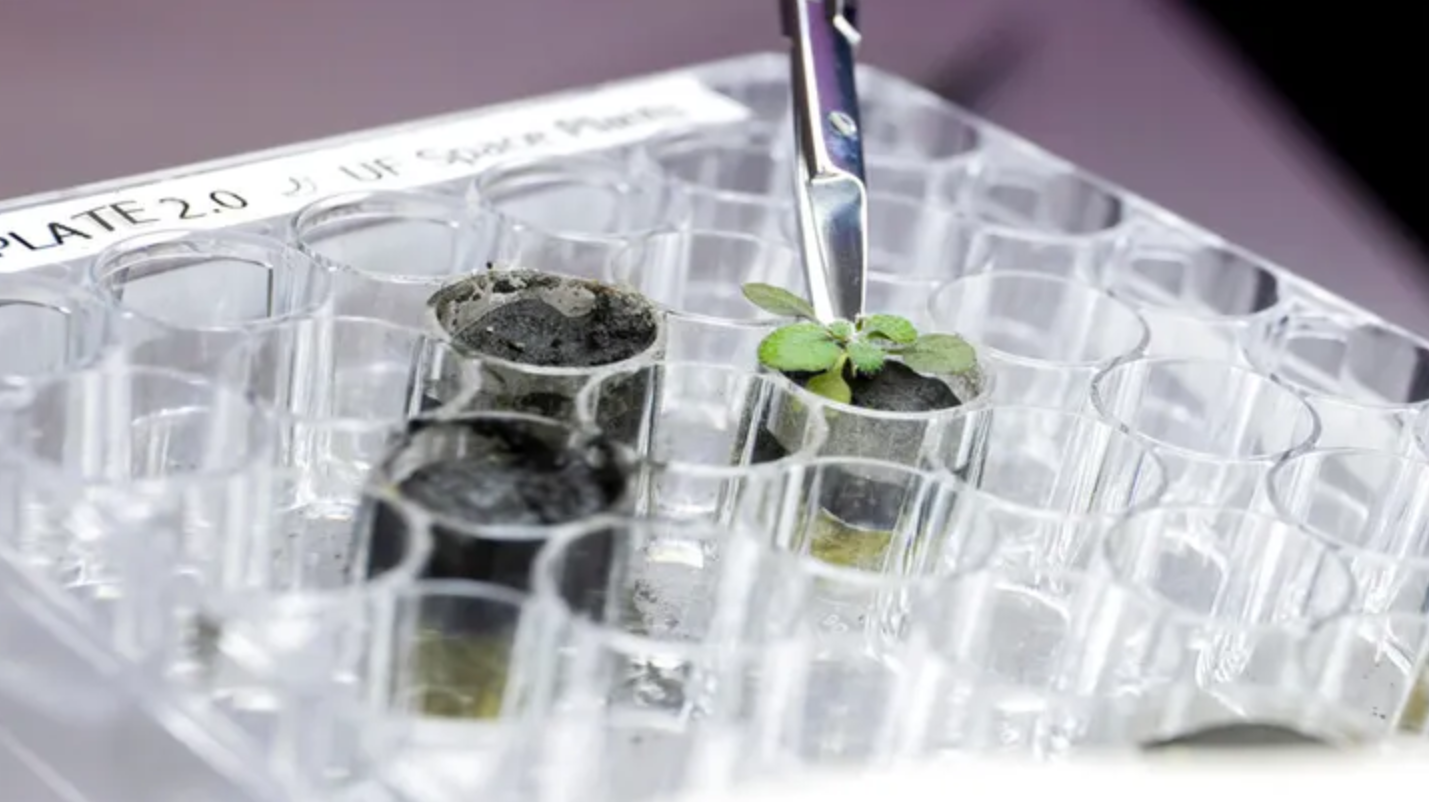
For the first time, scientists have successfully grown plants in lunar soil brought back to Earth by NASA’s Apollo astronauts. Researchers had no idea if anything would sprout(发芽) in the harsh moon dirt and wanted to see if it could be used to grow food by the next generation of lunar explorers.
“After two days, they started to sprout!” said Anna-Lisa Paul, a professor in Horticultural Sciences at the University of Florida, who took part in the experiment. “Everything sprouted. I can’t tell you how astonished we were! Every plant—whether in a lunar sample or in a control(参照实验)—looked the same up until about day six.”
Robert Ferl of the University of Florida’s Institute of Food and Agricultural Sciences and his colleagues planted thale cress(鼠耳芥) in moon soil returned by Apollo 11’s Neil Armstrong and Buzz Aldrin, and other moon walkers. All of the seeds sprouted. But within a week, the coarseness(粗糙度) and other properties of the lunar soil stressed the small, flowering weeds so much that they grew more slowly than seedlings planted in dirt from Earth. Most of the moon plants ended up stunted(发育不良).
The longer the soil was exposed to tough cosmic radiation and solar wind on the moon, the worse the plants seemed to do. The Apollo 11 samples—exposed a couple of billion years longer to the elements—were the least likely for plants to grow, scientists said. One solution might be to use younger geologic spots(地质点) on the moon, like lava flows, for digging up planting soil. The environment also could be improved, changing the nutrient mixture or adjusting the artificial lighting.
NASA said the timing for such an experiment was finally right, with the space agency looking to put astronauts back on the moon in a few years. The ideal situation would be for future astronauts to make use of the endless supply of available local dirt for indoor planting rather than set up a hydroponic(水培的) or all-water system, scientists said. “The fact that anything grew means that we have a really good starting point, and now the question is how do we optimize and improve,” said Sharmila Bhattacharya, NASA’s program scientist for space biology.
本时文内容由奇速英语国际教育研究院原创编写,未经书面授权,禁止复制和任何商业用途,版权所有,侵权必究!(作者投稿及时文阅读定制请联系微信:18980471698)
1.Why did the scientists try to grow plants in the lunar soil?
A To test if the plants could sprout.
B To take more dirt from the moon.
C To prepare food for future astronauts.
D To send more explorers to the moon.
解析:选C。C 细节理解题。根据第一段第二句的“see if it could be used to grow food by the next generation of lunar explorers”可用得知,科研人员这样做是为了便于将来的月球探索者准备食物。故选C。
2.What made the sprouted seeds end up stunted?
A The very low quality of the soil.
B They flowered too much soon.
C The polluted dirt on the earth.
D The change of artificial lighting.
解析:选A。A 推理判断题。根据第三段的“But within a week, the coarseness and other properties of the lunar soil stressed the small, flowering weeds so much that they grew more slowly”可知,月壤的品质不够好才让那些幼芽发育不良。故选A。
3.What kind of moon soil would probably be suitable for plant growth?
A The one receiving cosmic radiation.
B The one exposed to solar wind.
C The one having a very long history.
D The one coming from lava flows.
解析:选D。D 推理判断题。根据第四段的“One solution might be to use younger geologic spots on the moon, like lava flows, for digging up planting soil.”可知,解决月壤不利于植物生长这一问题的方法之一是,到月球上像熔岩流这样较年轻的地质点挖掘用于种植的土壤。故选D。
4.What will scientists most probably do next?
A Use available moon dirt for planting.
B Continue to grow plants in lunar soil.
C Put more astronauts back on the moon.
D Set up a hydroponic or all-water system.
解析:选B。B 推理判断题。根据最后一段中Sharmila Bhattacharya所说的话“The fact that anything grew means that we have a really good starting point, and now the question is how do we optimize and improve”可知,现在的问题是如何优化和改进月壤以种植植物,由此可知科学家们将继续利用月壤种植植物。故选B。